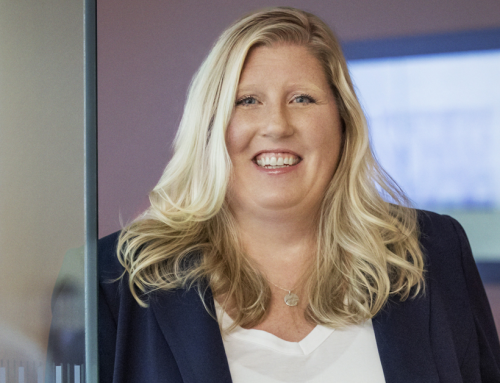Are you avoiding making tough decisions?
The status quo, while not always ideal, is often the most comfortable. And it’s that comfort that blocks all but the most determined leaders from making the tough decisions that can lead to a breakthrough.
When you choose to embrace tough decisions rather than avoid them, you set yourself and your business on a new trajectory of growth.
5 Tough Decisions
Through my business coaching work, these are 5 key decisions that I see RIA leaders often avoid, to their detriment.
1. Not firing someone who needs to go.
This is first on the list because it’s so common and so impactful. There’s someone on your team who shouldn’t be there. You know it, they know it, but neither of you do anything about it.
Look, I’ve fired people and I’ve been fired. I know both sides—it’s no fun! But what I discovered is if it’s not working for you, then it’s not working for them either. Yet the frustration of the present is often preferred to the uncertainty of the unknown and that keeps you and the person who needs to go stuck in the present untenable situation.
You need to step up as a leader and do the humane thing which is to free the person to find a new opportunity that is a better fit for them. You need to be the catalyst that propels them to their next level of growth instead of allowing them—and you—to wallow in mediocreville.
2. Not being or hiring the leader your firm needs for its next stage of growth.
There’s a reason why the first two key decisions relate to people—it’s because they’re the hardest to make and they have the biggest impact on the future of your company.
Granted, you didn’t get into the business because you wanted to manage people. But when your business gets to a certain size, you become the bottleneck. Your ability—or inability—to attract, lead, and retain key people becomes the governor or the accelerator to future growth.
Picture this: there’s a high level of performance that someone is capable of performing and then there’s a minimum level of performance that they need to deliver to keep their job. The difference between the two is discretionary effort. “Quiet quitting” is simply people deciding to deliver ZERO discretionary effort.
Your job as a leader is to create an environment where discretionary effort thrives without threat. It’s not about cajoling, berating, or using fear to induce desired behavior. It’s about removing the roadblocks so people WANT to give their all instead of feeling forced to for fear of losing their job.
As the head of the firm, you have to decide whether you will do the work necessary to develop into a great leader or whether you will hire a CEO who can do that for you. Stumbling along in that in-between world of you trying to lead the company while also having a full load of clients is a recipe for stagnation and frustration.
Make the decision to either become that great leader or hire someone who is and then get out of their way. And yes, great leaders are made, not born. You get to choose.
3. Not identifying a clear, compelling aspiration for the firm and effectively communicating it.
If you’ve built a multi-million-dollar revenue business, you probably ran into the “rule of 3 and 10.” I wrote about it in an earlier post and it’s the idea that “things break” right around every 3x and 10x in the business.
Every time you reach one of these 3x or 10x inflection points, you must make an important decision: Do you want to change and recommit to the next evolution of your firm, or do you want to slow down and milk the business as it starts its inexorable slide to the finish line?
This is a tough decision! Why? Because you are likely making a million or multiple millions in personal income and life is quite good. So why make the changes necessary for the next stage?
I can’t tell you what decision to make at that inflection point. What I can do is suggest that you start by dialing in on a clear, compelling aspiration for you and the firm. If you do that, the decision you make will become much clearer.
Where I see advisors make a mistake is they just amble along and react to what happens instead of proactively deciding what you want to have happen. You can either be the ball that bounces wildly around inside a pinball machine, or you can be the person pulling the plunger that sets the game in motion.
4. Continuing to be the lead advisor for too many clients.
Advisors who build successful businesses often end up with 300 or more clients for whom they are the lead advisor. Unfortunately, that leaves little time to build new growth capacity for the firm and to perform CEO-type duties.
Building a remarkable advisory firm requires that you grow as the firm grows. And the clients who challenged your skills when you were green in the business will not challenge your skills after 15 years in the trenches. Moving less complicated clients to another advisor in your firm frees you to spend more time on your most complicated relationships and to lead the firm and make it rain.
Ultimately, you must decide: What is the highest and best use of your time? If you fill it with non-challenging clients, you do them and yourself a disservice.
When you reach for something just out of your grasp, it becomes like a tractor beam pulling you toward it. It becomes a challenge and fuel for growth. When you take the easy road, it’s like gravity on steroids dragging you down to the least common denominator.
Make the decision to fill your time with work that challenges you to be at the top of your game. This is good for your business and your mental health.
5. Not developing a proactive organic growth strategy and instead relying on passive referrals
In an earlier article, I wrote about how the majority of advisory firms have zero organic growth. That puts your growth in the hands of someone else—the whims of the markets! Not a good place for a serious business owner.
Without growth, there’s no room for promotions, no room for R&D to explore new opportunities, and no room to enhance your services to take better care of your clients.
So how do you jumpstart growth? It starts with a decision to turn your firm into an organic growth machine.
But here’s what happens at most firms—once the owner reaches a certain “comfort level,” they ease up on proactive marketing and live off passive referrals and existing clients adding new assets. Those two things typically offset clients who leave (2 – 3% per year on average), clients who take distributions (3 – 5% per year), and your 1% advisory fee. The net result is zero organic growth and a business wholly dependent on fickle markets.
Yes, generating organic growth is much easier said than done. The inciting event for organic growth is to decide that organic growth is a top priority. Until you make this decision and mobilize the resources necessary to make it happen, you’ll be tossed about like a ship on the ocean (song reference alert!).
What Now?
Block out some time on your calendar to reflect on the 5 decisions I outlined above. Which ones apply to you? Are there other big decisions that you are ignoring and hoping will just magically disappear? What is your gut telling you to decide?
Then meet with your trusted advisors. If could be other people on your executive team, another advisor, your spouse, or your coach. Discuss the decisions that need to be made. Develop your “filters mechanism” to help you decide, similar to my 4 filters framework. And finally, decide, commit, and follow through.





